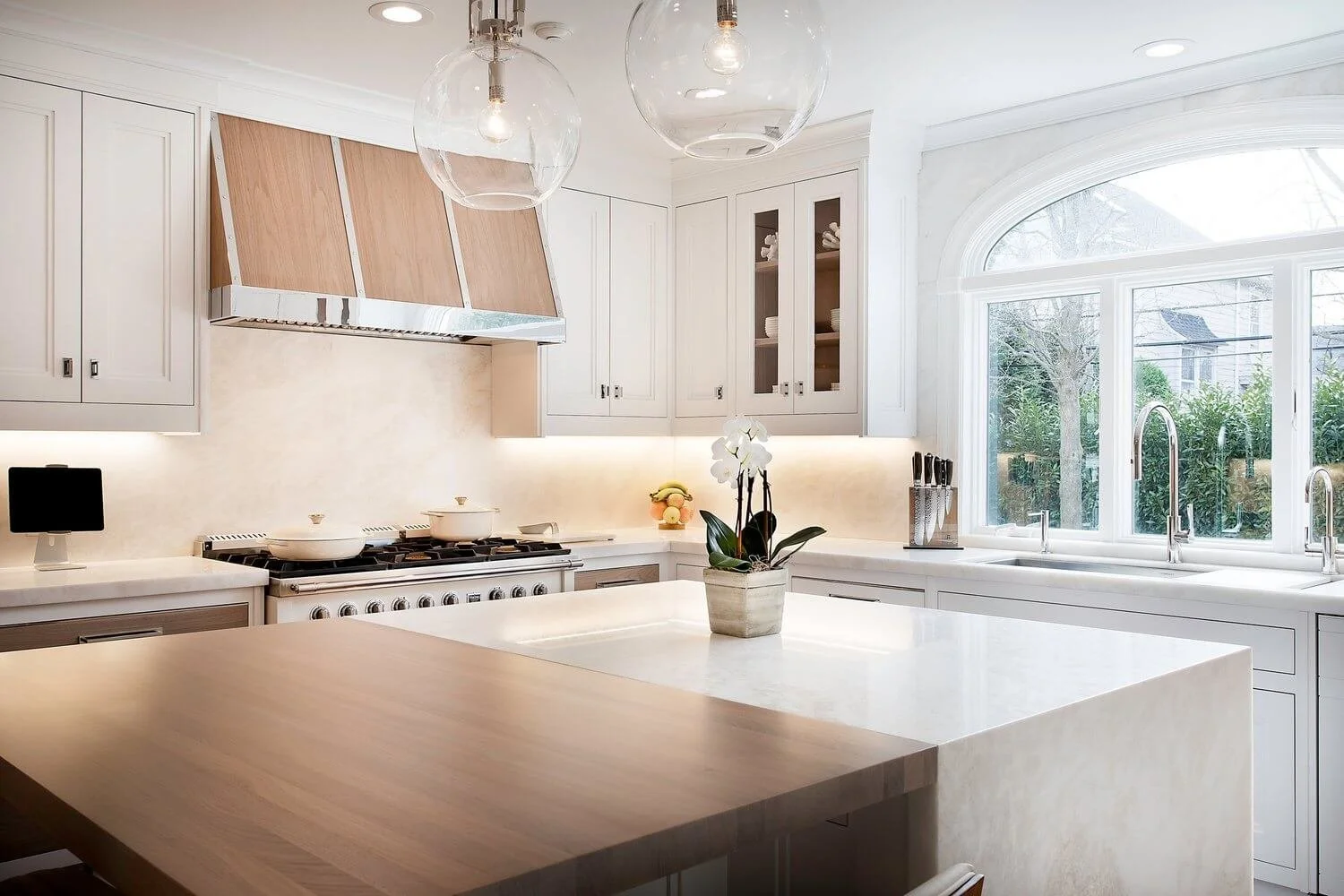Secrets of Luxury Cabinetry: Wood Countertops
Wood is the original countertop material. Before countertops even had a name, humans were using wood surfaces for preparing, displaying, and eating food. So perhaps you’ve decided to add to this legacy and install a wood countertop in your home. Not sure where to begin? Here’s a guide to help you select the wood countertop that works best for your home.
Where to Install a Wood Countertop
Let’s start with the basics: location. The best wood countertops are used sparingly and in strategic spaces—dining, preparation, or display areas. We generally do not recommend using wood countertops around the sink—not because you can’t—but because it won’t provide as satisfying an experience. Wooden countertops used around a working sink can get wet, but they will show that wear. The two best places to implement a wood countertop are in an island seating area, where the wood will create a warm surface for dining, and in a preparation station. A station built for chopping and preparing food is dedicated for heavy use. It will show its use as it wears and ages, and you won’t expect it to maintain a pristine condition. This is the fundamental factor to remember about wood countertops: they last forever, but they show the life that’s been lived on them.
The Creation Process
The next question to ask yourself is: what kind of wood should I use? After all, you can make a countertop out of any wood species. Some species are harder than others, some have more complex grain structures, and the choice really depends on what you’re looking for in terms of aesthetics and functionality. At Bakes & Kropp, we use a lot of walnut in our countertops. Walnut has a tight grain and a classic look that is popular with homeowners. If you’re looking for a wood to use in a cutting station, however, walnut is a little soft. You’d be better off selecting a hard maple, which has a very dense, close grain that keeps it from absorbing water. Maple will last for eons.
Once you’ve selected a species, there are different construction styles to consider. A “butcher block” surface is one that is intended to be cut on. For this, we create an end grain countertop, which involves cutting small squares and gluing them together, so you are cutting on the end grain of the tree in the same orientation that it grows. This is the most durable method and the best for your knives. A wood countertop can also be constructed in a “plank” style, in which planks of wood are laid flat on their sides, or an “edge grain style,” in which the planks of wood are laid on the narrow edge. These styles are more suited to dining or display areas and offer different aesthetic results.
Maintaining Your Wood Countertop
After you’ve designed and installed your wood countertop, how do you maintain it? Part of the beauty of wood is that it shows its history, but it is important to preserve the wood and make sure it lasts. There are two types of wood finishes: oil and film. A film finish is one that you would use on a cabinet or dining surface, as it is not very reparable. An oil finish can be rejuvenated time and again with re-oilings, making it a better choice for heavy-use surfaces such as chopping stations. A countertop with an oil finish can be refinished by a worker or the homeowner themselves through sanding and re-oiling. There are many pros and cons to both types of finishes, but at Bakes & Kropp we tend to use oil finishes for its reparability.
Particularly in our current landscape, homeowners might be concerned about the cleanability of wooden surfaces and their likelihood to retain bacteria. The cool thing about wood is that it actually has natural antimicrobial properties. If a wooden countertop or cutting board is washed correctly, it is safer than plastic. All you need is a little soap and water!
Still have questions? Give us a call or visit a Bakes & Kropp showroom. Our talented team of kitchen designers will walk you through the process and have you admiring your new wooden countertop in no time.


